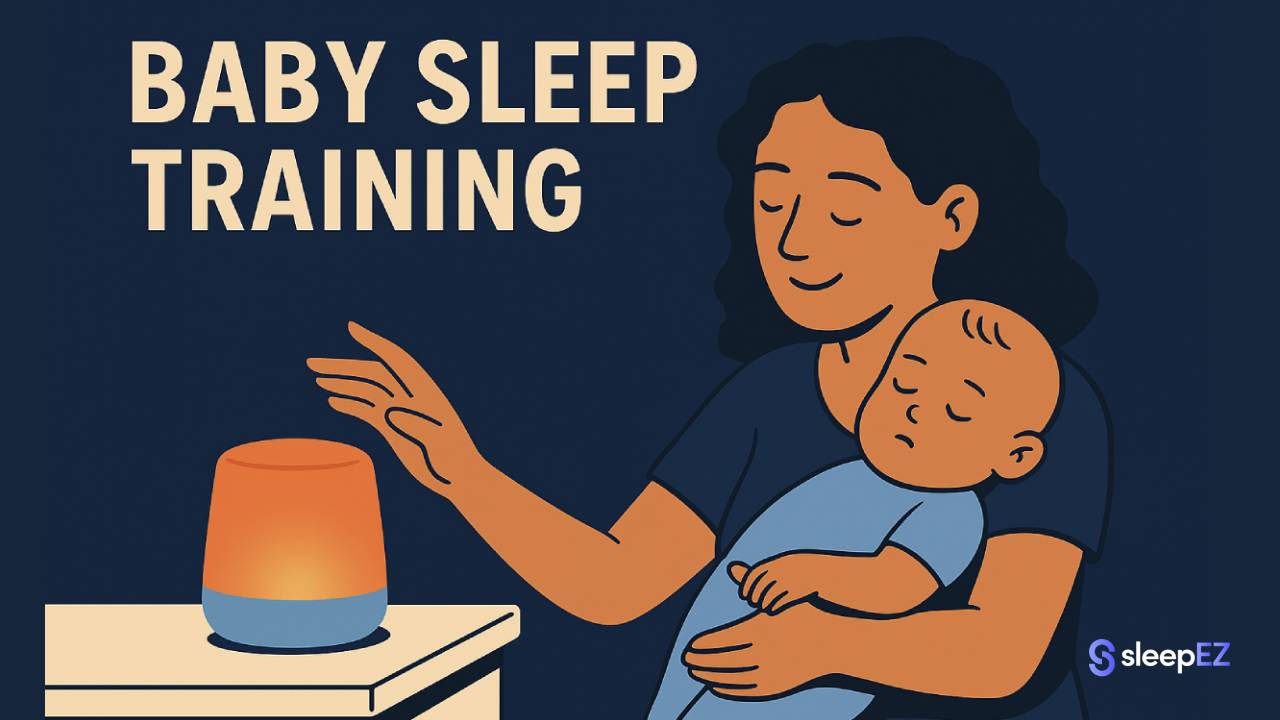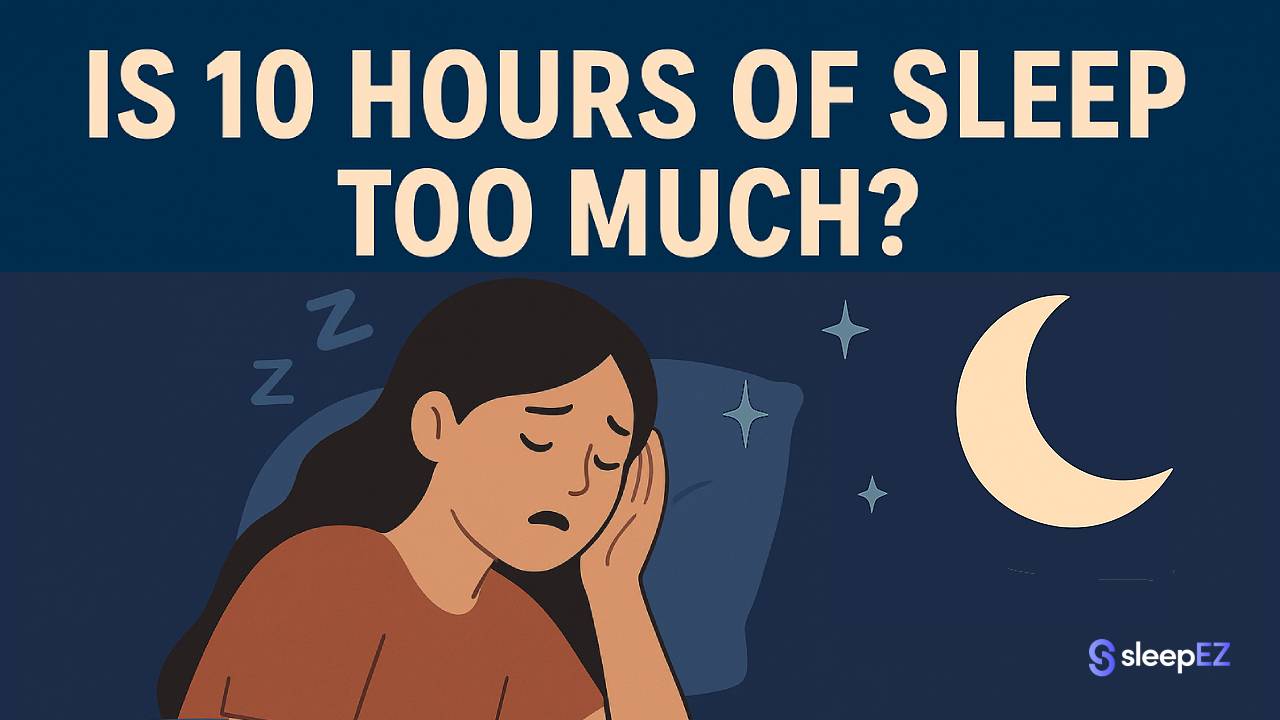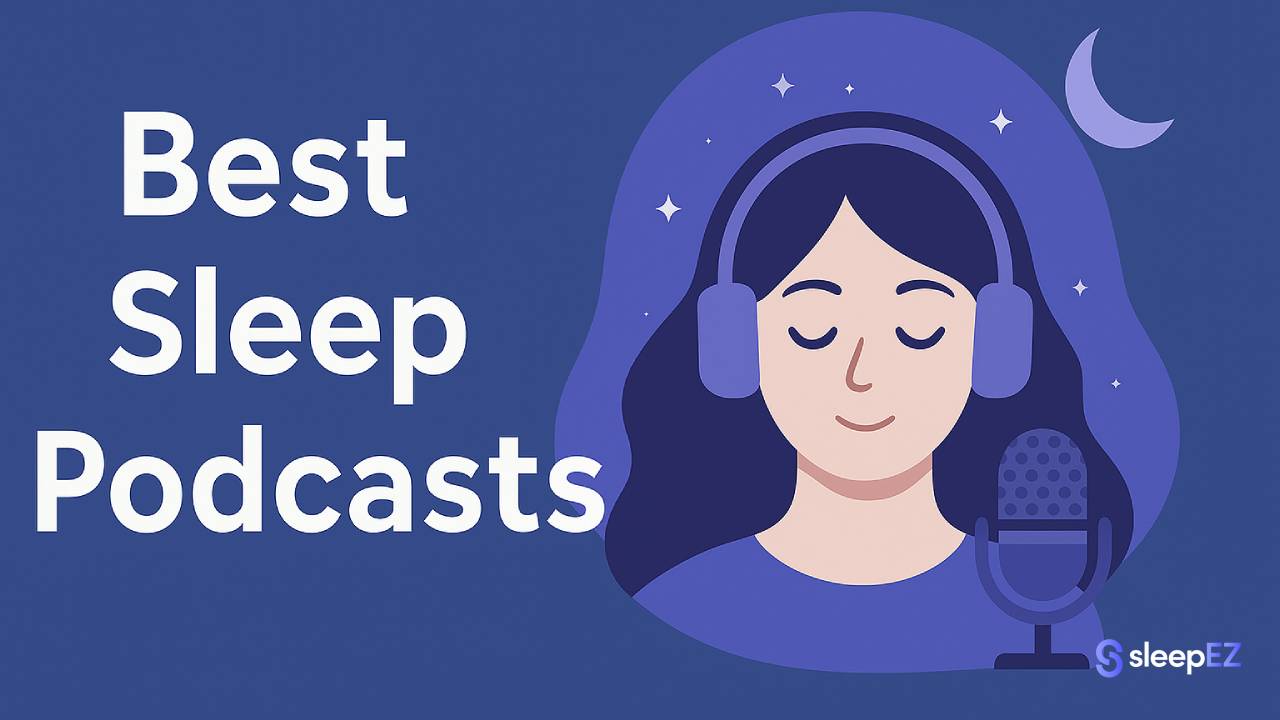If you're reading this on your phone at 3 AM while rocking your baby for the third time tonight, you're not alone. You're tired. You're overwhelmed. And you're probably wondering if there's a better way.
Sleep training is the process of helping your baby learn to fall asleep independently and self-soothe back to sleep when they wake during the night. It's not about leaving your baby to cry endlessly or abandoning them when they need you. It's about teaching your little one a valuable life skill.
Think of it like learning to walk. At first, you hold their hands and guide them. Then you let go and let them find their balance. Sleep training works the same way with sleep.
Here's what you'll learn: why sleep training benefits the whole family, when to start, how to create the perfect sleep environment, what methods work best, and the exact steps to take on your first night. You're about to give your baby (and yourself) the gift of independent sleep.
Why Consider Sleep Training? The Benefits for Baby & Parents
Sleep training isn't just about getting more rest (though that's pretty great too). It's about setting everyone up for success with better sleep quality and consistency.
For Your Baby:
- Better quality, more restorative sleep for crucial brain development
- Improved mood and less fussiness during the day
- Stronger immune system from adequate rest
- Better eating patterns and growth
- Learning the valuable skill of self-soothing
For You and Your Partner:
- More predictable evenings and return of personal time
- Improved mental health and reduced stress
- Better parent-child relationship when you're well-rested
- Restored energy to be the parent you want to be
- Better focus at work and in daily activities
As pediatrician Dr. Marc Weissbluth notes, well-rested children don't just have happier moods; they also show improved attention and learning. Research published in the National Center for Biotechnology Information confirms that sleep training improves infant sleep problems with no adverse effects reported after 5 years. When your baby sleeps well through independent sleep skills, everyone thrives.
When is the Right Time to Start Sleep Training?
Most babies are ready for sleep training between 4-6 months old. This is when their sleep cycles start to mature and they rely less on frequent night feeds. The American Academy of Sleep Medicine recommends that infants 4-12 months should sleep 12-16 hours per 24 hours for optimal health.
Signs Your Baby is Ready:
- Can go 4-5 hours between feeds consistently
- Has good weight gain and growth
- Can go longer stretches at night without feeding
- Shows signs of self-soothing (like sucking on fingers)
- Has predictable wake windows during the day
- Shows clear tired signals (yawning, rubbing eyes)
Before you start any sleep training method, get the green light from your pediatrician. They know your baby's health history and can confirm if sleep training is right for your little one. Mayo Clinic experts emphasize that helping your baby sleep independently is beneficial for the whole family.
The Foundation of Success: Creating the Perfect Sleep Sanctuary
Before you try any sleep training method, you need to set up the right environment. This isn't optional. It's the foundation that makes every method more successful.
A Consistent Bedtime Routine
A predictable routine (bath, book, pajamas) is a powerful set of sleep cues that signals to your baby's brain it's time to wind down. This routine becomes a cornerstone for teaching independent sleep.
A Pitch-Black Room
Darkness tells your baby's brain it's time to sleep. Use blackout curtains or shades to block out stimulating light from streetlights and early morning sun.
A Cool, Comfortable Temperature
Keep the room between 68-70°F (20-21°C). Babies sleep better when they're slightly cool rather than warm.
The Ultimate Tool: A Consistent Soundscape
This is where most parents miss a crucial step. Your baby spent nine months in the womb hearing constant background noise. A sound machine masks disruptive household noises, mimics the womb environment, and serves as a powerful sleep cue for independent sleep.
Dr. Harvey Karp, pediatrician and sleep expert, explains that the womb environment is louder than a vacuum cleaner. Your baby actually finds comfort in consistent sound for self-soothing.
This consistent sound is so vital that we've detailed the science behind using a white noise machine for your baby in our complete guide.
A reliable, multi-sound device like the Hush Sound Machine is perfect for this, as it offers both white and pink noise to create a truly consistent and soothing environment for any sleep training method.
Popular Sleep Training Methods
There's no single "right" way to sleep train. Choose the method that feels comfortable for your family and supports your baby's journey to fall asleep independently.
Cry It Out (CIO) / Extinction
You put your baby down awake and don't return until morning. This method focuses on complete independence from the start. It's often the fastest method but can be emotionally difficult for parents.
Pro-Tip: White noise can help mask household sounds that might wake your baby during the night, making this method more effective.
The Ferber Method (Graduated Extinction/Check-and-Console)
You check on your baby at timed intervals (3 minutes, then 5, then 10). You offer comfort with your voice but don't pick them up. This method gradually builds self-soothing skills.
Pro-Tip: Consistent background noise helps your baby stay calm between check-ins and prevents sudden household sounds from disrupting their progress.
The Fading Method (Chair Method)
You start by sitting next to the crib, then gradually move your chair farther away each night until you're outside the room. This method slowly reduces parental presence while maintaining consistency.
Pro-Tip: Keep the same background sounds playing throughout this process so your baby has one consistent comfort cue as other elements change.
Pick-Up, Put-Down Method
When baby cries, you pick them up until they calm down, then put them back in the crib awake. Repeat as needed. This method offers more hands-on comfort during the learning process.
Pro-Tip: Maintain steady background noise during this method to help your baby stay calm and focused on self-soothing rather than external distractions.
Your First Night: A Simple Step-by-Step Checklist
- Start your consistent bedtime routine (bath, feeding, story, pajamas)
- Dim the lights 30 minutes before bedtime to signal sleep time
- Activate your sound machine to white or pink noise at a safe volume and distance
- Put baby down awake but drowsy in their crib
- Leave the room calmly and confidently
- Follow your chosen method consistently without switching approaches
- Stay committed even if it feels hard - consistency is key
Remember: consistency in your bedtime routine, environment, and response is everything. Stick with your plan for at least 3-5 nights before making changes.
Pros and Cons of Sleep Training
| Pros | Cons |
|---|---|
| Better sleep quality for the whole family | Can be emotionally difficult for parents initially |
| Baby learns valuable self-soothing skills | Some crying is inevitable during the learning process |
| More predictable bedtime routine | Not suitable for all families or situations |
| Reduced parental stress and improved mental health | Requires consistency and commitment from parents |
| Creates foundation for lifelong healthy sleep habits | May take several nights to see full results |
As Dr. Craig Canapari of Yale University assures parents, "Sleep training your child is not selfish, and sleep training doesn't hurt your child." Long-term studies published by the American Academy of Pediatrics found no harmful effects on children's behavior, sleep, or parent-child relationships after sleep training.
Frequently Asked Questions
How long does sleep training usually take?
Most babies show improvement within 3-5 nights when parents maintain consistency. Complete success with independent sleep typically happens within 1-2 weeks. Every baby learns self-soothing at their own pace.
Is it okay for my baby to cry during sleep training?
Yes, some crying is normal and expected during any sleep training method. You're not hurting your baby - you're teaching them how to self-soothe and fall asleep independently. Set a timer if it helps you stay committed to your chosen approach.
Will sleep training hurt my bond with my baby?
No. Research shows that sleep training doesn't damage the parent-child relationship. A well-rested parent is actually more emotionally available and responsive during awake hours. Your bedtime routine and consistent response build trust. Studies from NPR's analysis of sleep training research concluded there were no harmful effects on children's behavior, sleep, or parent-child relationships.
What if sleep training isn't working for us?
If you don't see any improvement after a full week of consistency, take a break and try again in 2-3 weeks. Your baby might not be developmentally ready yet. Make sure your bedtime routine and sleep environment are optimized before trying again.
What is the 5-3-3 rule for sleep training?
The 5-3-3 rule suggests putting your baby to bed 5 hours after their last nap, ensuring they stay awake for 3 hours before bedtime, and keeping bedtime within a 3-hour window each night. This creates consistency that supports self-soothing skills.
What is the 3-minute rule for sleep training?
The 3-minute rule refers to waiting 3 minutes before responding to crying during certain sleep training methods like Ferber. This gives your baby time to practice self-soothing and fall asleep independently before you intervene.
Consistency, Patience, and Restful Nights Ahead
Sleep training is one of the best gifts you can give your family. You're not being selfish by wanting better sleep. You're being a smart parent who understands that teaching independent sleep skills benefits everyone's health and happiness.
Consistency in your bedtime routine, sleep environment, and chosen method is your secret weapon. Pick an approach that feels right, set up the perfect sleep sanctuary, and stick with your plan. Your baby is capable of learning to self-soothe and fall asleep independently.
Those peaceful nights you're dreaming of? They're closer than you think. You've got this, and soon you'll both be sleeping soundly through the night.




Leave a comment
This site is protected by hCaptcha and the hCaptcha Privacy Policy and Terms of Service apply.